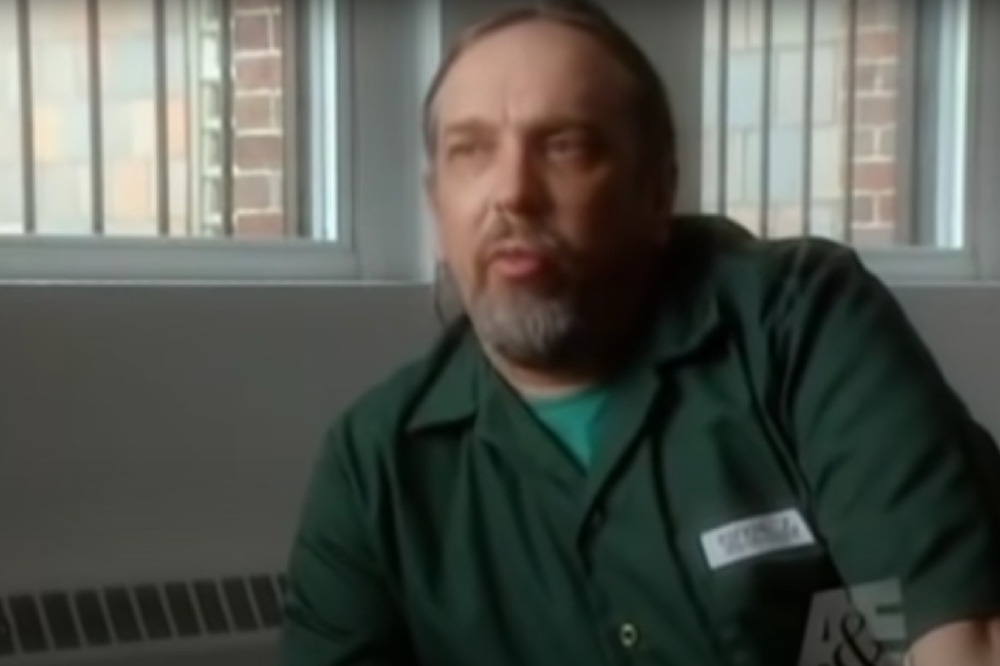With quite a few serial killers, their lonesome ways are often the result of being dismissed and rejected through most of their life, causing possible anger issues and even deadly desires. Joel Rifkin’s decade-long killing spree is an example of how being isolated can affect someone.

Joel Rifkin / Picture Credit: Jesusmalaarki on YouTube
Who is Joel Rifkin?
Rifkin is a serial killer who was active throughout the 90s. 1989 marked the year he claimed his first victim; he discarded the bodies so they couldn’t be identified.
His haunting killing spree ended in 1993, when he was pulled over by police, who found a corpse in the vehicle.
The following year saw Rifkin convicted of the multiple murders; he later plead guilty to additional murder counts and received a lengthy sentence...
Troubled childhood and teen years
Joel David Rifkin was born on January 20th, 1959, to two unmarried college students. New York (NY) couple Bernard and Jeanne Rifkin adopted Joel only three weeks after he was born.
The couple also adopted a girl, Jan, three years later.
1965 saw the family move to East Meadow, Long Island, where Rifkin attended Prospect Avenue Elementary School.
Rifkin had a hard time fitting in with other children, and became a regular target for bullying.
He was cut out of sports teams and even neighbourhood games, seemingly due to his slanted posture and slow movements. Rifkin suffered with undiagnosed dyslexia, as well as finding academic studies difficult, in spite of his 128 IQ.
Entering his teenage years, Rifkin tried, with no avail, to fit in with his peers.
He joined the track team in hopes of making friends; instead, he was tormented by other members of the team, similar to his elementary school experiences.
Rifkin became frustrated with sports, so he joined the yearbook staff. His camera was stolen almost instantly, and he was banished form attending the wrap party at the end of the year.
Targeting prostitutes
Rifkin’s experiences with mistreatment and isolation at the hands of others eventually wore him down; he began retreating into himself, becoming the only member of his own disturbing world.
He began to daydream about raping and stabbing women...
In 1972, Rifkin was inspired by Alfred Hitchcock’s Frenzy, and became even more gripped by the idea of strangling women, specifically prostitutes.
Around this time, Rifkin’s parents gifted him a car; he would use this car to seek out prostituted in nearby Hempstead, and in Manhattan later on.
His disturbing fixation on prostitutes would only become more intense when he entered Nassau Community College, in 1977.
Rifkin often skipped classes, and barely showed up to his part-time jobs; unsurprisingly, he preferred to spend his time with prostitutes instead.
This obsession that Rifkin had drained what little money he had, causing him to move in and out of his parent’s house throughout the 80s.
Attending different schools and receiving poor grades, Rifkin dropped out in 1984.
By March, 1989, Rifkin could no longer keep the lid on his violent and sickening mental fantasies. The soon-to-be killer waited for his mother to leave town, then brought home a young prostitute called Susie.

Once they were back at Rifkin’s Long Island home, he bludgeoned her with a Howitzer artillery shell. When she continued to struggle, he strangled her to death.
After using an X-acto knife, Rifkin removed Susie’s identity by severing her fingertips and removing her teeth with pliers. He put her head in an old can of paint, and stashed the rest of her remains in garbage bags.
Rifkin left Susie’s head and legs in the woods in Hopewell, New Jersey, then got rid of her arms and torso in NY’s East River.
The rising body count
One year later (in 1990), Rifkin murdered his second victim. He dismembered the body similar to his first victim, after beating her with a table leg and strangling her to death.
This time, however, he put the body parts in buckets that were weighted down with concrete, and threw the remains into the East River and a canal in Brooklyn.
Rifkin started his own landscaping business in 1991; disturbingly though, he would use the rented site to hide the bodies of his victims until the right time came to dispose of them.
He went on to kill 17 women (by strangulation), the majority of whom were either prostitutes or drug addicts. The police could barely identify the victims, let alone the person responsible.
Arrest and imprisonment
Rifkin was caught when police attempted to pull him over due to a missing rear licence plate. Instead of complying, Rifkin incited a police chase only to crash outside a local court house.
When troopers approached Rifkin, they immediately noticed a strong odour coming from the back of the vehicle; when they investigated, they found the rotting body of Tiffany Bresciani.
Detectives then listened to Rifkin as he described all 17 murders after his arrest; he wrote down names of his victims, and even drew maps to help officers locate missing victims.
After being transferred to Nassau County Correctional Facility to stand trial, Rifkin, on Mau 9th, 1994, was sentenced to 25 years to life for murder; as well as reckless endangerment for leading police on a car chase.
Shortly after, the convicted killer pleaded guilty to two more counts of murder; he received two more consecutive terms of 25 years to life in jail.
At one point during his stay in prison, Rifkin spent 23 hours per day in solitary confinement over the course of four years.
Joel Rifkin is currently serving 203 years in the Clinton Correctional Facility. He will be eligible for parole in 2197, at 238 years of age.
Written by Melissa, who you can follow on Twitter @melissajournal
RELATED: Sinister Saturday: How Catherine Genovese’s murder led to a psychological discovery
Tagged in True Crime

